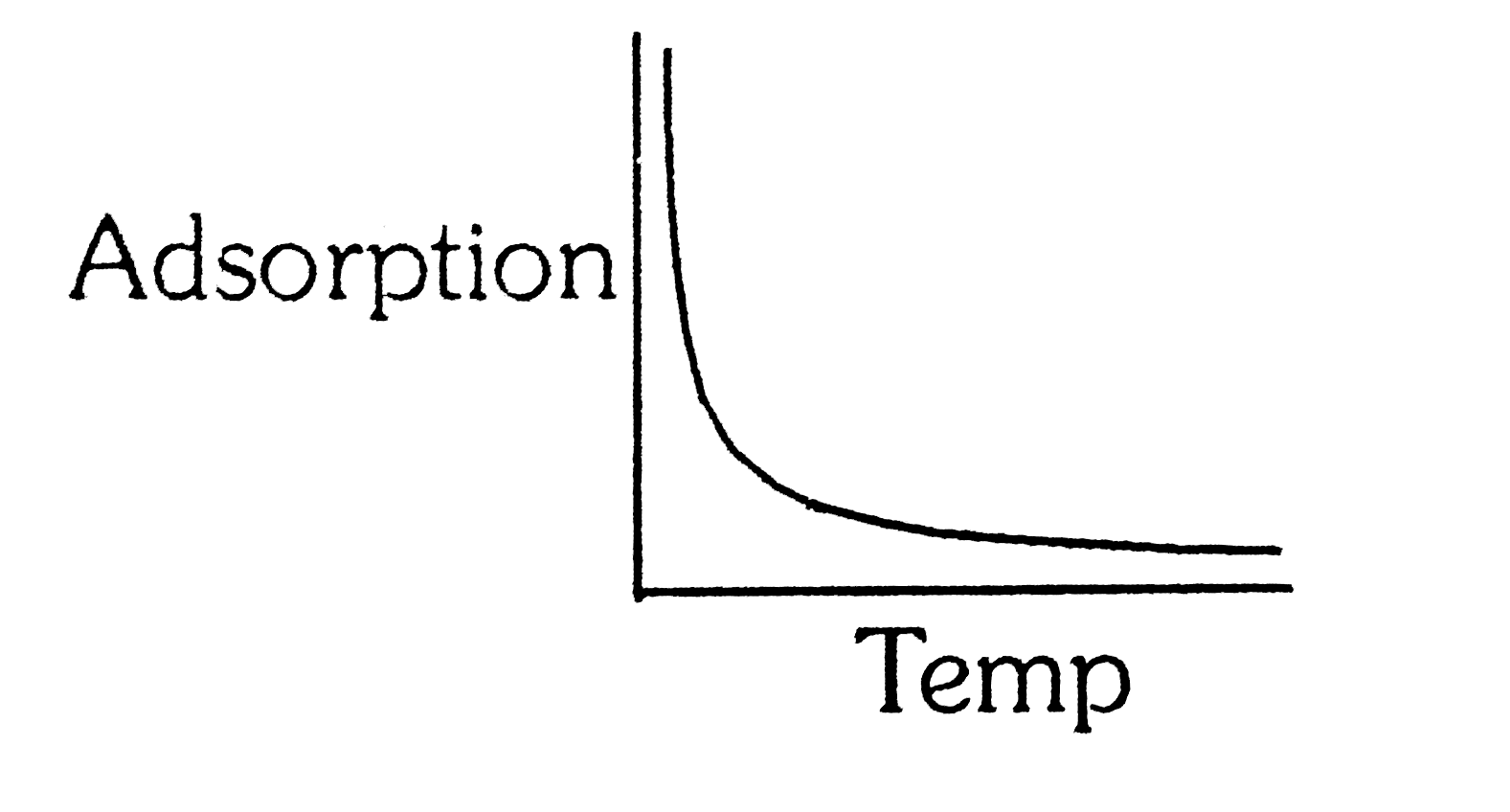Assertion : During adsorption, ΔG,ΔHandΔS decrease i.e., their values become negative.
Reason : Adsorption is a spontaneous process. Randomness or disorder decreases during adsorption.
Statement -1 is True, Statement -2 is True, Statement -2 is a correct explanation for Statement - 1
Statement -1 is True, Statement -2 is True, Statement -2 is NOT a correct explanation for Statement - 2
Statement - 1 is True, Statement - 2 is False
Statement - 1 is False, Statement - 2 is True
The correct Answer is:A
To analyze the assertion and reason provided in the question, we can break it down step by step:
Step 1: Understanding the Assertion
The assertion states that during adsorption, the values of ΔG (Gibbs free energy change), ΔH (enthalpy change), and ΔS (entropy change) decrease, meaning they become negative.
- ΔH (Enthalpy Change): Adsorption is typically an exothermic process, which means it releases heat. Therefore, ΔH is negative during adsorption.
- ΔG (Gibbs Free Energy Change): For a process to be spontaneous, ΔG must be negative. Since adsorption is spontaneous, ΔG is also negative.
- ΔS (Entropy Change): During adsorption, a gas or solute molecules adhere to a surface, leading to a more ordered state. This results in a decrease in randomness or disorder, hence ΔS is negative.
Conclusion for Step 1:
Thus, the assertion that ΔG, ΔH, and ΔS decrease (become negative) during adsorption is correct.
Step 2: Understanding the Reason
The reason states that adsorption is a spontaneous process and that randomness or disorder decreases during adsorption.
- Spontaneity: As mentioned, adsorption is indeed a spontaneous process, which is indicated by the negative ΔG.
- Randomness/Disorder: When molecules adsorb onto a surface, they lose some freedom of movement, leading to a decrease in entropy (randomness). Therefore, the statement about randomness or disorder decreasing is also correct.
Conclusion for Step 2:
Both parts of the reason are correct: adsorption is spontaneous, and it leads to a decrease in randomness or disorder.
Final Conclusion:
Since both the assertion and the reason are correct, we can conclude that the assertion is true and the reason correctly explains the assertion.
The assertion states that during adsorption, the values of ΔG (Gibbs free energy change), ΔH (enthalpy change), and ΔS (entropy change) decrease, meaning they become negative.
- ΔG (Gibbs Free Energy Change): For a process to be spontaneous, ΔG must be negative. Since adsorption is spontaneous, ΔG is also negative.
Thus, the assertion that ΔG, ΔH, and ΔS decrease (become negative) during adsorption is correct.
The reason states that adsorption is a spontaneous process and that randomness or disorder decreases during adsorption.
Both parts of the reason are correct: adsorption is spontaneous, and it leads to a decrease in randomness or disorder.
Since both the assertion and the reason are correct, we can conclude that the assertion is true and the reason correctly explains the assertion.
Topper's Solved these Questions
- SURFACE CHEMISTRY BOOK - AAKASH INSTITUTE ENGLISHCHAPTER - SURFACE CHEMISTRY EXERCISE - ASSIGNMENT SECTION - F
4 Videos
- SURFACE CHEMISTRY BOOK - AAKASH INSTITUTE ENGLISHCHAPTER - SURFACE CHEMISTRY EXERCISE - ASSIGNMENT SECTION - G
3 Videos
- SURFACE CHEMISTRY BOOK - AAKASH INSTITUTE ENGLISHCHAPTER - SURFACE CHEMISTRY EXERCISE - ASSIGNMENT SECTION - D
3 Videos
- STRUCTURE OF ATOM BOOK - AAKASH INSTITUTE ENGLISHCHAPTER - STRUCTURE OF ATOM EXERCISE - ASSIGNMENT ( SECTION -J) Aakash Challengers Questions
12 Videos
- TEST 1BOOK - AAKASH INSTITUTE ENGLISHCHAPTER - TEST 1EXERCISE - EXAMPLE
134 Videos
Similar Questions
Assertion: For Adsorption ΔG,ΔH,ΔS all have -ve values.
Reason: Adsorption is a exothermic process in which randomness decreases due to force of attraction between adsorbent and adsorbate.
View SolutionAdsorption of a gas on the surface of solid is generally accompanied by decrease entropy. Still it is a spontaneous process. Explain.
View Solution
Knowledge Check
Assertion : Physical adsorption increases with increase in temperature.
Reason : Physical adsorption is an endothermic process.AIf both assertion and reason are true and reason is the correct explanation of assertion.BIf both assertion and reason are true but reason is not the correct explanation of assertionCIf assertion is true but reason is falseDif both assertion and reason are falseFill in the blanks by putting appropriate choices. During adsorption there is _______ in enthalpy and _______ in the entropy of a system by adsorption is a spontaneous process and thus ΔG must be ________. Rate of physisorption ________ with increase in pressure.
Adecrease, decrease, negative , increaseBincrease, increase , positive , decreaseCdecrease, increase, negative , decreaseDincrease, decrease, positive , increaseAssertion : If both ΔH∘andΔS∘ are positive then reaction will be spontaneous at high temperature.
Reason : All processes with positive entropy change are spontaneous.AIf both assertion and reason are true and reason is the correct explanation of assertion.BIf both assertion and reason are true but reason is not the correct explanation of assertionCIf assertion is true but reason is false.DIf both assertion and reason are false.
Which of the following is true during adsorption?
a. ΔG , ΔH , and ΔS all are negative.
b. ΔG is negative, but ΔH and ΔS is positive.
c. ΔG and ΔH are negative, but ΔS is positive.
d. ΔG and ΔS are negative, but ΔH is positive.
View SolutionAssertion :- During physical adsorption multimolecular layers are formed.
Reason :- For physical adsorption value of ΔH=−20 to -40 kJ/mol.
View SolutionWhat is the sign of ΔH and ΔS for adsorption process.
View SolutionAssertion :- The graphical representation of physical adsorption with temp is

Reason :- This is weak adsorption & adsorption is exothermic process.
View SolutionAssertion In case of projectile motion, the magnitude of rate of change of velocity is variable.
Reason In projectile motion, magnitude of velocity first decreases and then increases during the motion.
View Solution